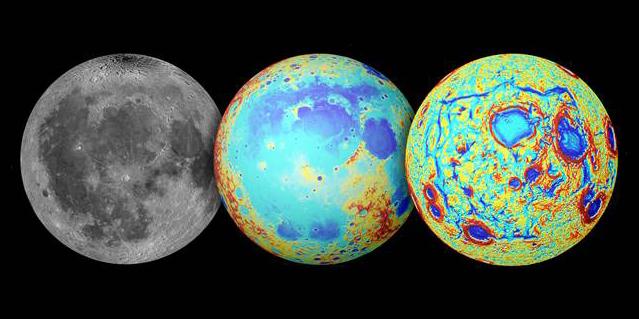New data obtained by NASA’s GRAIL mission reveals that the Procellarum region on the near side of the moon — a giant basin often referred to as the “man in the moon” — likely arose not from a massive asteroid strike, but from a large plume of magma deep within the moon’s interior.
Researchers used data from NASA’s Gravity Recovery and Interior Laboratory (GRAIL) spacecrafts in a new study, published in the journal Nature. The researchers’ findings serve as “compelling evidence” that the moon’s feature “was formed in the wake of a mega volcanic eruption and not the location of a massive asteroid strike,” as was previously thought, Discovery News reports.
The data from GRAIL, whose mission was conducted in 2012, led geophysicist Maria Zuber from MIT to discover that the Procellarum basin is a polygon, rather than an oval shape, as is common for asteroid-caused craters. The basin is surrounded by straight edges and 120-degree angles, which led researchers to believe that Procellarum is not one of the moon’s impact craters.
Zuber’s research team determined that the basin’s rock density suggested a “massive lava flow” rather than a “massive asteroid strike,” Discovery News notes. The two GRAIL spacecrafts found that denser rock caused the moon’s gravitational field to increase, which provided the researchers with information about the Procellarum basin’s rock density. Zuber’s team simulated volcanic intrusions and found that the structure beneath the basin exhibited a similar rock density.
The team concluded that after the moon was formed, molten rock was forced out of the moon’s interior. This, in turn, created the basin as the moon’s crust was fractured and its surface contracted as the magma escaped. But even though the basin may not have been the result of an asteroid’s impact, the team hasn’t ruled out the possibility that the magma plume was caused by an asteroid hitting the moon.
“How such a plume arose remains a mystery,” Zuber told Discovery News. “It could be due to radioactive decay of heat-producing elements in the deep interior. Or, conceivably, a very early large impact triggered the plume. But in the latter case, all evidence for such an impact has been completely erased. People who thought that all this volcanism was related to a gigantic impact need to go back and think some more about that.”
Agencies/Canadajournal
 Canada Journal – News of the World Articles and videos to bring you the biggest Canadian news stories from across the country every day
Canada Journal – News of the World Articles and videos to bring you the biggest Canadian news stories from across the country every day



